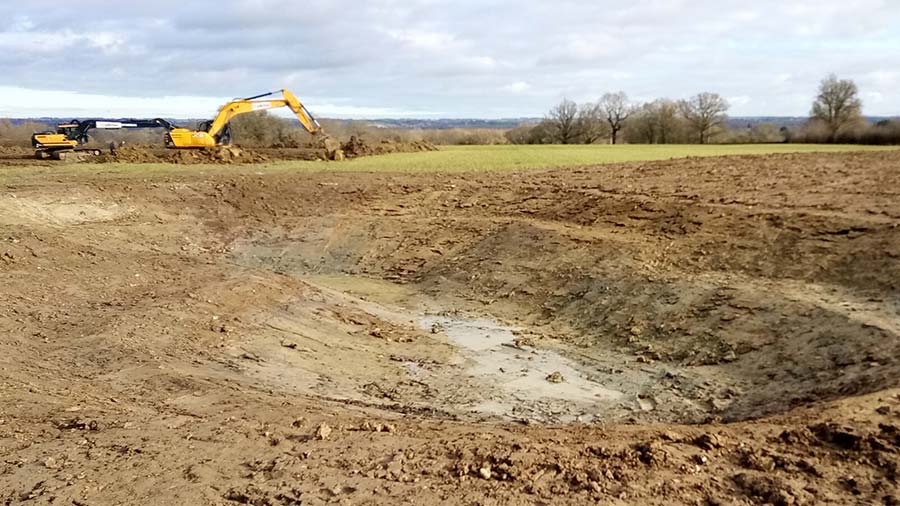Arable land set aside to create habitat for endangered newts
 Ponds being excavated for great crested newts in Smarden © Kentish Stour Countryside Partnership
Ponds being excavated for great crested newts in Smarden © Kentish Stour Countryside Partnership Two large “ghost ponds” have been reclaimed from a 5ha arable field in Kent as part of a countywide project to restore habitat for great crested newts – a European protected species.
The work has been co-ordinated by the Kentish Stour Countryside Partnership (KSCP), a not-for-profit conservation organisation which has been one of Natural England’s habitat delivery bodies since 2018.
See also: Nature-friendly farming – two farmers show how it’s done
The field in question has been used for arable production since the Second World War, but landowner Simon Beresford, who acquired the land two years ago, is reverting it to pasture and woodland.
The “ghost ponds” were documented on an 1871 map, but disappeared when the field was used solely for growing crops. “We wanted to restore these ponds and witness the impact they have on nature,” said Mr Beresford.
They have now been excavated and restored to their original size and shape – more than 500sq m each – by a specialist contractor, with shallow sloping sides for aquatic plants to root into, and a 2.5m “deep point” for the newts to breed in.
Great crested newts have suffered major declines in recent years because many farm ponds have either been filled in, or are not deep enough for the newts to breed in.
There are now 100 wildlife ponds restored or created by KSCP in the county since it started its work four years ago.
The landowners are not paid for their involvement, and all costs are met under Natural England’s District Level Licensing Scheme for great crested newts.
“We regularly survey these ponds and have seen an overall positive uptake in great crested newt colonisation already,” said KSCP’s Sarah Harrington-James.
Using e-DNA water sampling, it was found that in 2020, 38% of ponds restored or created under the scheme were “positive” for great crested newts in their first year – far above the 16% target.
